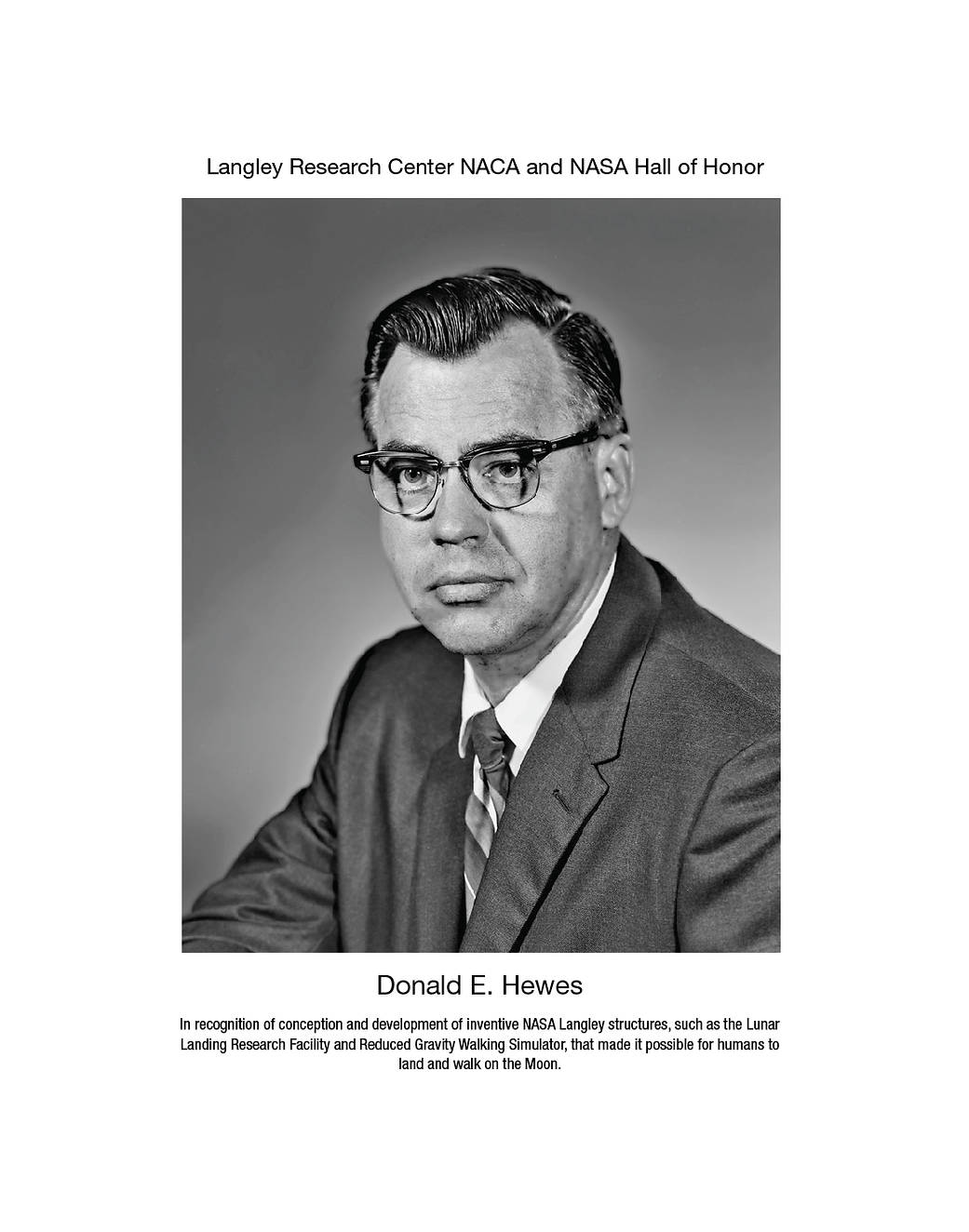
Donald E. Hewes
Donald E. Hewes (1924-1985) was a Langley engineer whose inventions made it possible for humans to land and walk on the Moon. He conceived of what is now the Landing and Impact Research Facility, where the Apollo astronauts trained for six successful Moon landings and where engineers have crashed aircraft in the name of safety and drop tested space capsules to improve water landings for more than 50 years.
Born in Cobleskill, New York, Hewes received a bachelor’s in aeronautical engineering from Rensselaer Polytechnic Institute in 1945. He started out as a design engineer in private industry working on the Ercoupe light plane, before joining NASA Langley where his initial work was on studies of low-speed stability and control of airplanes, reentry vehicles, and recovery devices using free-flight testing of radio-controlled dynamically scaled models.
That all changed in 1962 when, as legend has it, he was lying on his sofa and came up with the idea of a lunar landing facility. Hewes’ 240-foot tall, 400-foot long structural concept, a gantry that is the tallest structure at NASA Langley, became operational in 1965 as the Lunar Landing Research Facility and is where techniques were developed for the rocket-powered Lunar Excursion Module to land on the Moon. Because the Moon has no atmosphere, and only one-sixth of the Earth’s gravity, piloting the LEM was a real challenge. The innovative solution developed by Hewes and the team at Langley involved suspending the LEM vehicle by long cables constantly pulled upward to generate a downward gravity of one-sixth the Earth’s. A complex system of electronics, servo systems and computer software allowed near “free flight” in a simulated lunar environment.
To make the simulated landing even more realistic Hewes and the team filled the base of the structure with dirt and modeled it to look like the Moon’s surface. They angled floodlights to simulate lunar light and installed a black screen at the far end of the gantry to mimic the airless lunar “sky.” Hewes, the head of the Spacecraft Research Branch, personally climbed into the fake craters to spray them with cans of black enamel paint so that the Apollo astronauts could experience the shadows they would see during the actual Moon landing.
Hewes not only helped humans land on the Moon, but also walk there. He was responsible for inventing the Reduced Gravity Walking Simulator, a simple contrivance made of canvas slings, a wooden walking surface and steel cables attached to an overhead lightweight trolley. This rig tilted a walker about 80 degrees from vertical by holding him up with two cables. Astronauts, suspended in mid-air, could practice moonwalking down the plywood surface. This innovative simulator prepared NASA’s astronauts for the one-sixth gravity environment they would face walking on the lunar surface.
Hewes retired from NASA Langley in 1980.


























